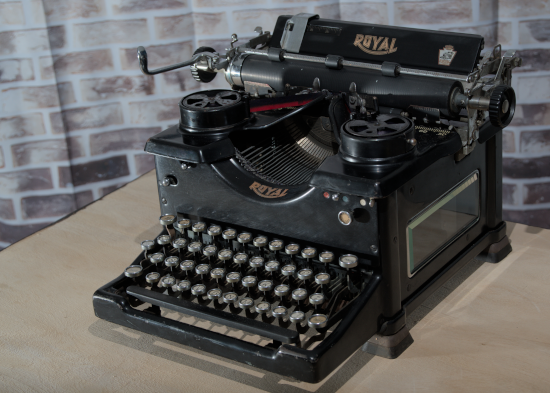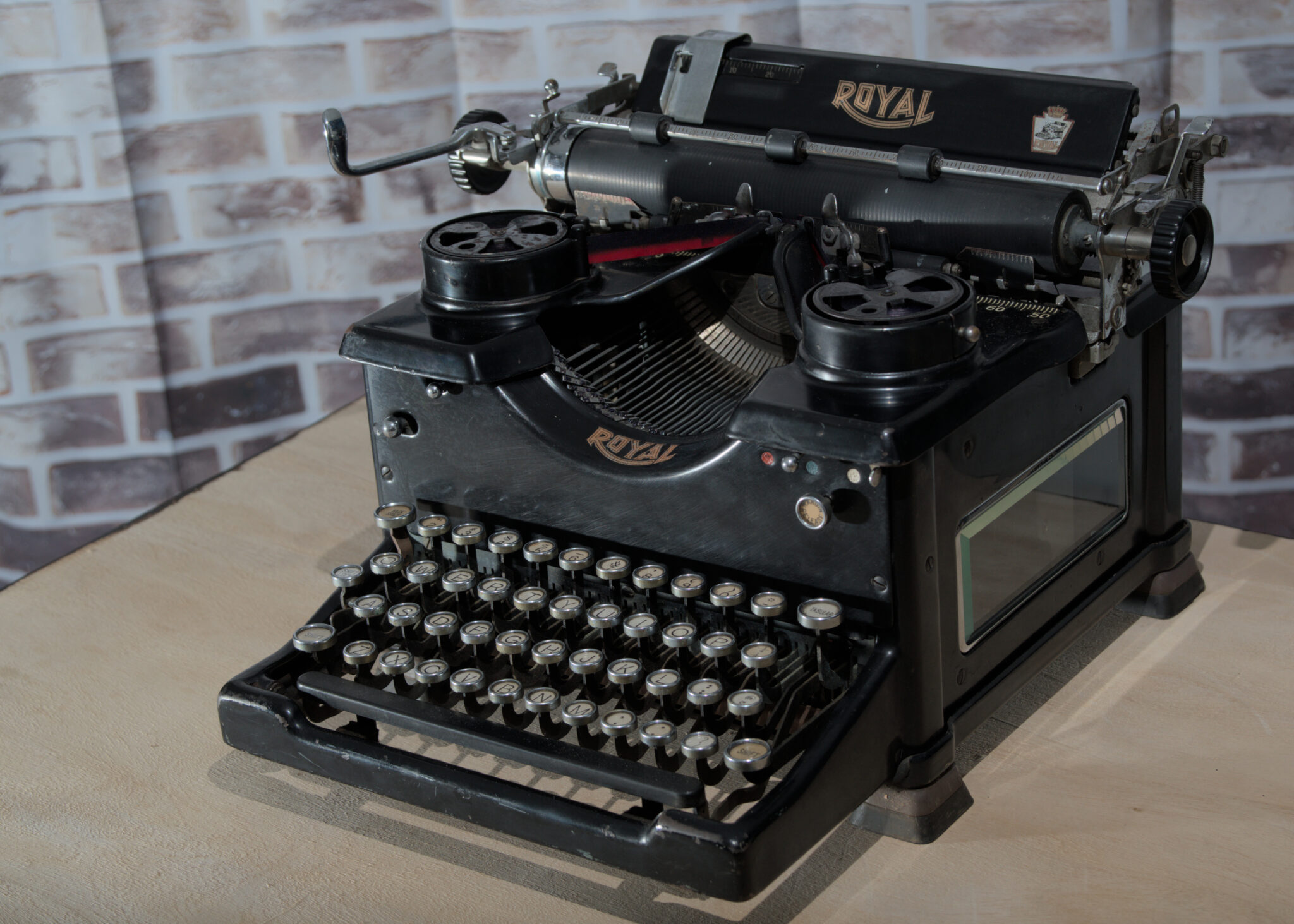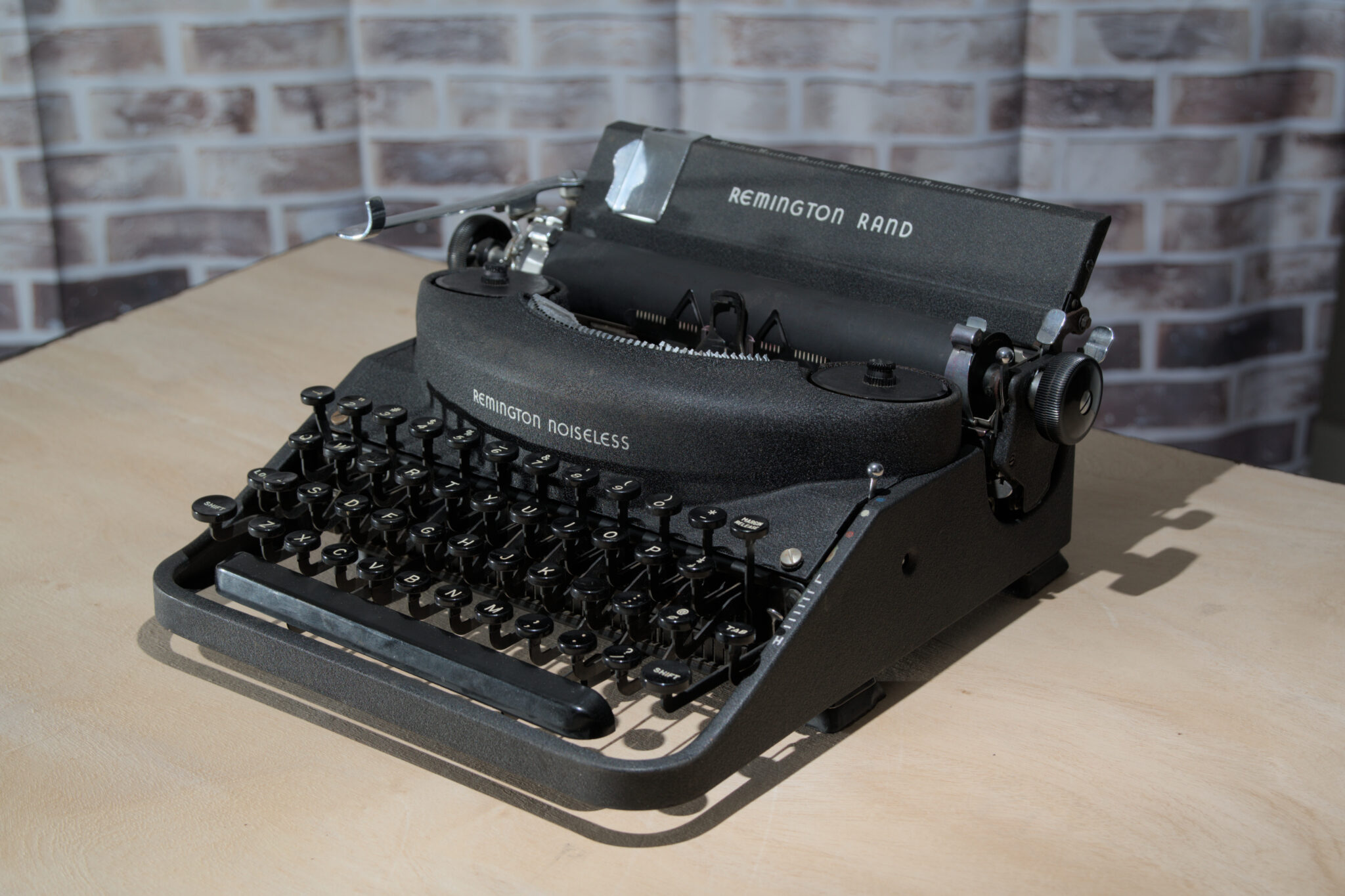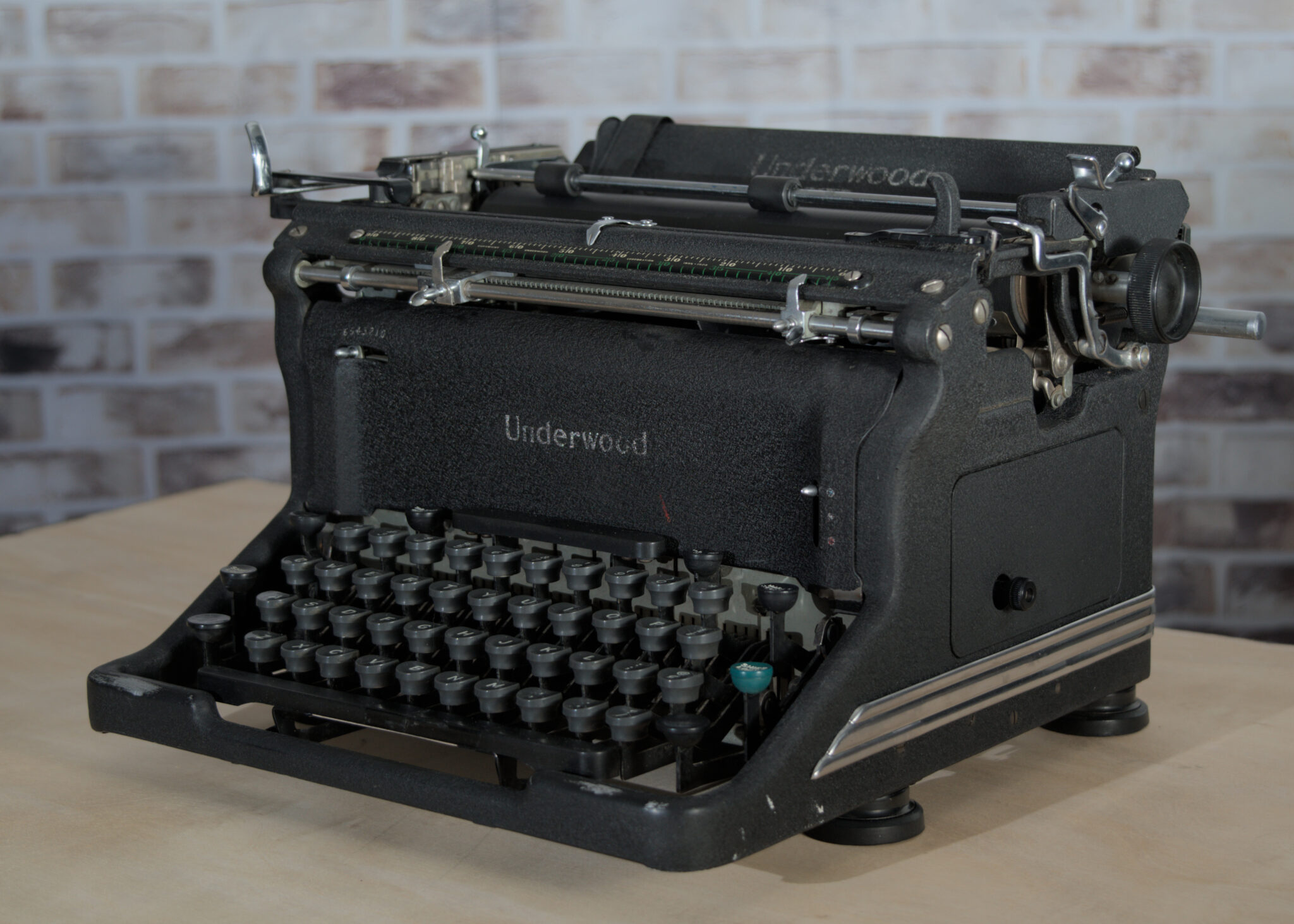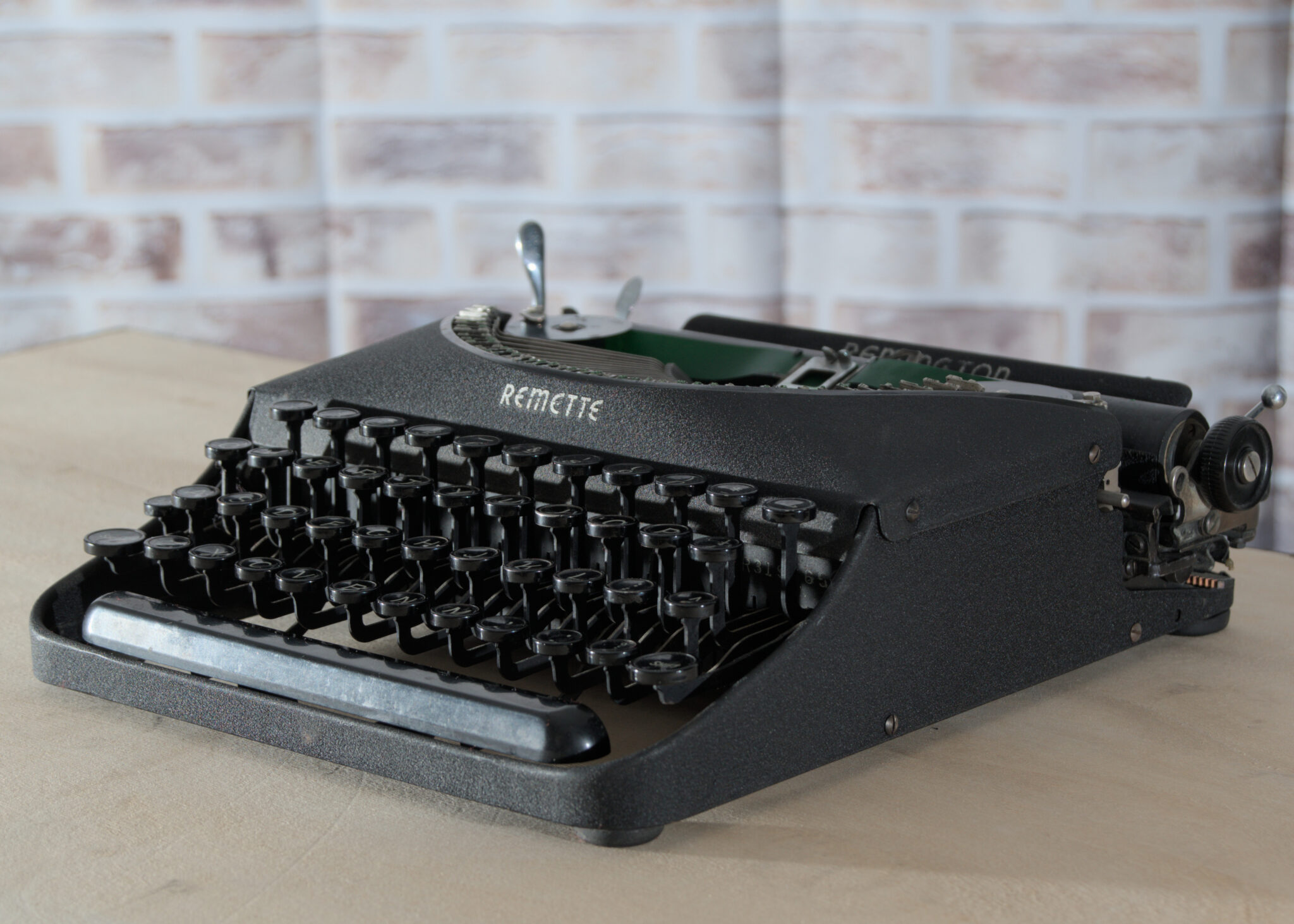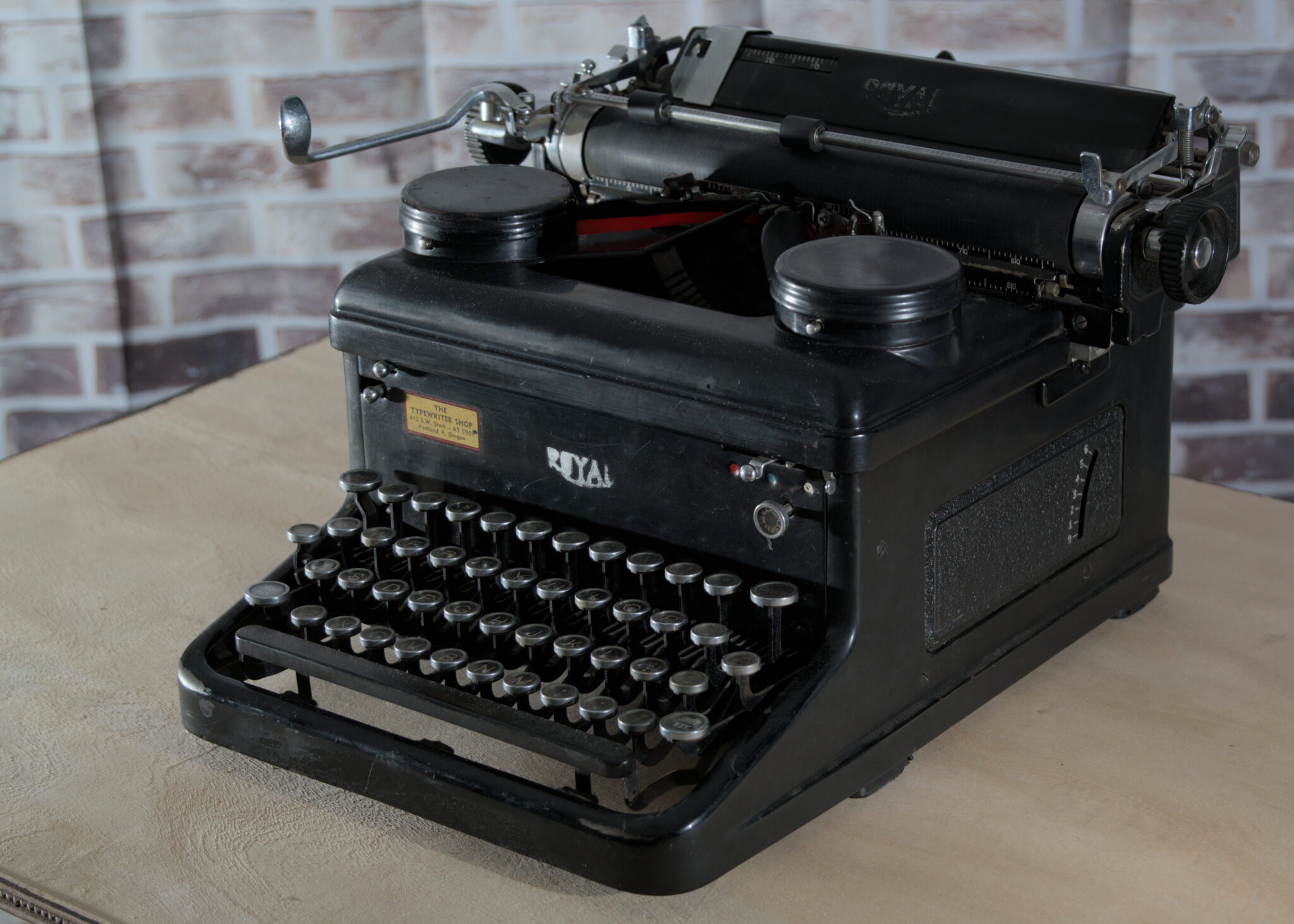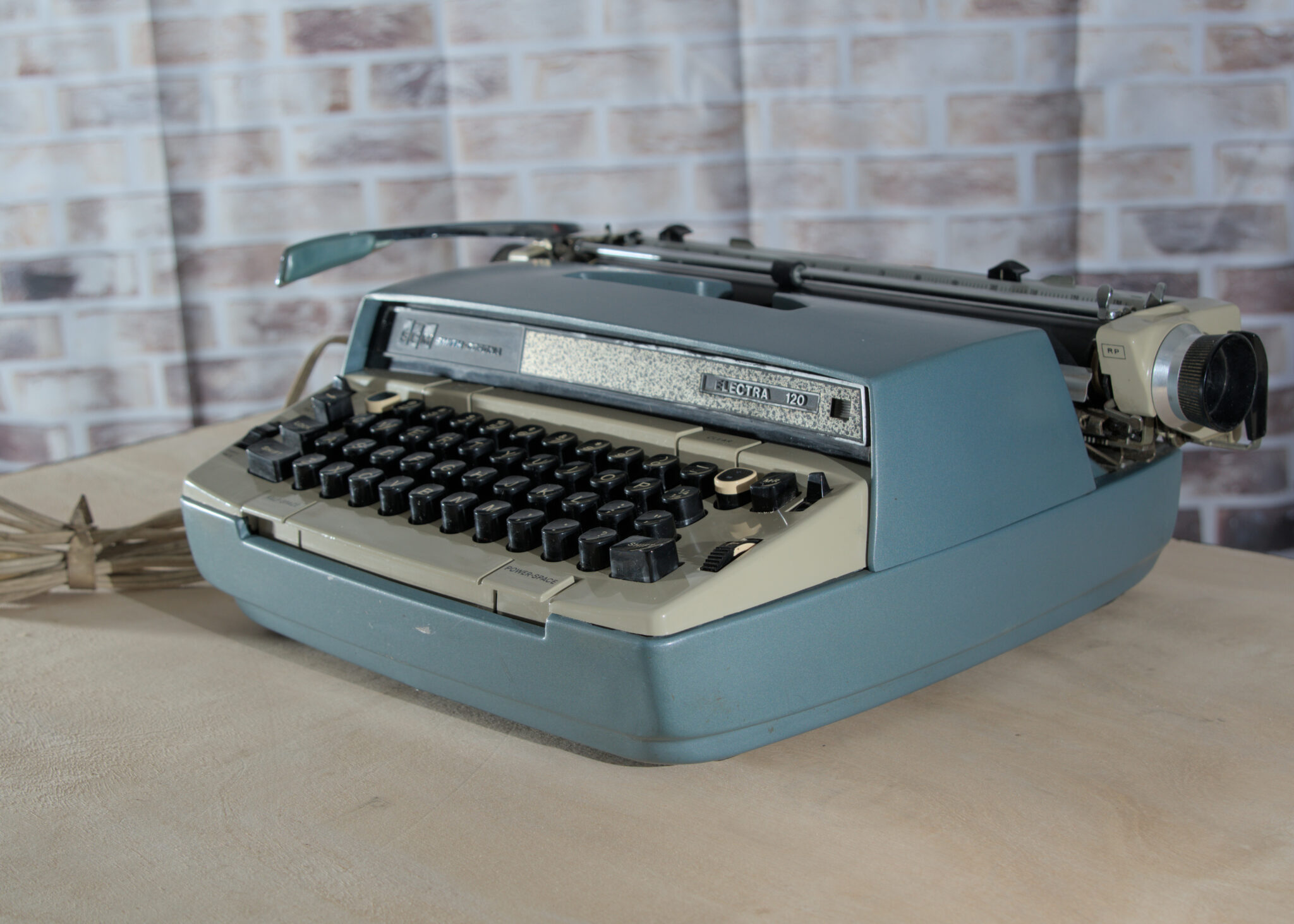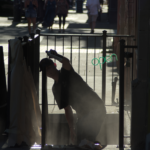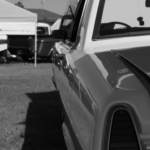I’m getting enough typewriters collected that I think it is time to show them to whom ever visits this place and a little history of the machine I photographed. I also used this as a practice session with my flash setup. I REALLY want to learn how to use flash, strobe, studio lighting better. These were taken with 2 remote flashes. One big one that is adjustable power and zoom with a very small one as fill light for the dark sides (and unfortunately, left monster shadows around the typewriters).
If you’ve got a typewriter and want to know a little more about it the web site most typewriter owners/collectors go to is called the Typewriter Data Base.
I have three that are from family. Jamie gave me a Remington Remette she had behind her bed for a while (adorable little thing, you’ll see). Then my aunts gave me my grandparent’s machines (from my dad’s side). The oldest of these two is my grandpa’s Underwood Standard (with Pica typeface, so it prints wider characters – 11 per inch I think), and my grandma’s Royal Elite typeface (what most people would think of as 12 point or 12 characters per inch).
Here they are in order of which ones I enjoy using most (currently – because it changes a little):
1st is the only one I paid more than $50 for. It is an Underwood Champion (Finger Flight) from 1950. This little guy came with a case from the factory, but did not have one when I purchased it used. It types nicest of all of my typewriters. Snappy, quick, and clear. The issues are that it is light weight so it “skooches” across the surface as you type. He’s not pretty, but he’s the best in my stable at what he does. This one also goes to work with me a few times a week (I just carry her by the front bar below the space-bar like a suit case).
2nd, and my favorite to look at is my Royal No. 5 from 1933 (Because glass side windows! How cool is that?). She types “well” but the shift doesn’t go back to lowercase unless you help it, or wait for 10 or so seconds (that feels like minutes when you’re typing). It is just snappy goodness, with a true “thwack” sound of what a typewriter should sound like as you go along writing your words. It is also my 2nd heaviest typewriter. I bought it through shopgoodwill online. Shipping cost me more than the typewriter (it was $19.99 + shipping). Plans for this one are more cleaning (generally, that fixes 90% of your issues), and waxing the exterior so it is as shinny as new.
3rd, is my Remington Rand Noiseless from 1948, and I wanted to love this one so bad. I waited for it impatiently as it shipped. Got it here, cleaned it up real well, and .. It is spongy to use, the “i” key needs more than I have done to it (new spring probably, it doesn’t return to its home like the others), and it just .. Ugh, it was so underwhelming, but the typeface looks nice, it is “usable”, and I really do like how it looks, it’s just, such a typing disappointment. I do use it a little (Take it to work because it is pretty easy’ish to carry). I will be selling this little fella once I have it working well. This was also a Shop Good Will find ($20.99 + shipping).
4th, My grandma’s Royal Elite from 1959. This one came from my Aunt Judy (here in Utah). Believe it or not, my grandma’s is a really nice machine to type on. It has most of the bells and whistles you would expect from 1959. Other than dust, it was really clean. I haven’t cleaned it much except to blow it out with my air compressor, and scrub the cover (fabric/vinyl cover) with some soap and water. The lid was also incapable of latching closed. The red “Royal” logo on the front is also the button to release the lid. I did some eyeball engineering and it now clicks closed again (Just means I used small pliers to re-bend the metal hook to latch with the lid again). I’ll heft it out to the garage and really clean it up soon, but I’m cleaned out for a bit yet.
5th, is my grandpa’s 1948 Underwood “SS” Standard. I asked the typewriter group about the “SS” identifier since it was produced shortly after Hitler’s world tantrum. They said it was an internal designation for repair shops. I still think that it’s crazy to associate anything with SS that close to the end of the war. It has Pica typeface so it only types about 11 characters per inch, where as the regular or Elite typeface does 12 (doesn’t sound like much, but it adds up). It types “well”, but it also feels a little spongy when you type, and you really have to build up hand strength to use it because it isn’t very snappy, you’ve got to smack it with authority to get it to make a clear letter. This one came from my aunt JoEllen in Washington. It also had a lot of my grandpa’s oils on it, so it was a strange, sad, or nostalgic process to clean it up. Where he used it or touched it most had smoothed out with the oils, or had a pattern of his hand placement (Places like the front sides where his palms rested, or on the left side where he held it as he pushed the carriage back, and the right where he spun the ribbon to a fresh spot). When I cleaned it, the oils washed away, the shiny metal shined again, and the crinkle finish came back. The space bar was broken in half so I carved, and soaked Popsicle sticks in super glue, let them harden, and epoxied them under the arm (you can kind of see it in the picture as a faint line under the space bar). If this doesn’t hold, I’ll clean it all out again, and use some aluminum to fit over the Bakelite space bar, and epoxy that in place (and polish it). I will be doing more cleaning on this one. The crinkle still looks dull (more than it normally does) even after a good wash, scrub, and rinse. I will also clean the guts out again, they had a lot of old machine oil in there, and a few arms were bent. I also found that WD-40 and a toothbrush is great for cleaning the crinkle finish, just avoid spraying it into the workings of the typewriter its self.
6th is the little lady Jamie gave me. It is a 1942 Remington Remette Standard. Really doesn’t type terrible, it just has a tinny platen (the black round thing it types against), small return arm, and the type is climpy as it goes. The “o” will also make a round hole in the paper if you don’t use a few sheets of paper at once. It is a cute machine, and if I were a traveler and had to haul a type writer for notes or letters I would use this one. It works, but it isn’t as comfortable to use as the Underwood Champion, or my big Royal No. 5.
7th is my 1937 Royal KHM. I think it was my first big typewriter I ordered from Shop Good Will online. I have it working okay, but the carriage doesn’t zip back like it should, and even though it moves well by hand, it will pause during typing and you’ll type several letters over one another before it starts to move again. The key strikes feel really nice and solid, the typeface is clean, but the dang carriage just makes using it frustrating. I need to sit down with it at a comfortable bench, and really tear into it. Once it works well, I will list it for sale locally (I’m in no mood to ship the beast – it is my heaviest machine). It is also a heavy mo-fo but is the same exact size and internals as my No. 5 Royal that I love to look at (with the glass windows on the side). This one was $9.99+Shipping by the way.
Finlay. #8, and the cause of all these shenanigans and shit. The Smith-Corona Elite 120 ELECTRIC. I got it at a local Good Will while shopping with Charlotte for some t-shirts. I always head right to the electronic/stuff area and this time, I was greeted with this old girl. It had a sticker for $14.99, but since they do military discount, I got her for an even $14.00 after tax. It types nice, really fast (basically as fast as you can type on a computer keyboard), but the “felling” just isn’t there like it is with a mechanical typewriter. I literally came home, plugged it in, rolled some paper into it, and typed. The ribbon was worn out, so I next day shipped ribbon, and it’s basically, usable. The ribbon vibrator (moves the ribbon up for the type slug to make an imprint, then falls back down out of the way so you can see what you typed – this one works, but doesn’t go back down). I am not sure on the year because the Smith-Corona electrics for the late 60’s – 70’s do not show my serial number. I can kind of figure it is a 1968-1970 Smith-Corona Electra but they do not list a 120 (I did find that the 120 means it can do 12″ wide paper instead of the normal 10″). I’ll probably keep this one because it started it all .. SIGH .. It also needs a case (had one from the factory, just not at the Good Will). It has also received ZERO cleaning :), that is in its future for sure.
That’s the collection at the moment. I do have a Royal from around 1948 from Shop Good Will but it was dropped and doesn’t work. I am taking it apart to keep as spare pieces for my other Royals (they internals are all about the same decade to decade).
The machines I still want to acquire are an Oliver No. 9 like this one (around 1919 era):
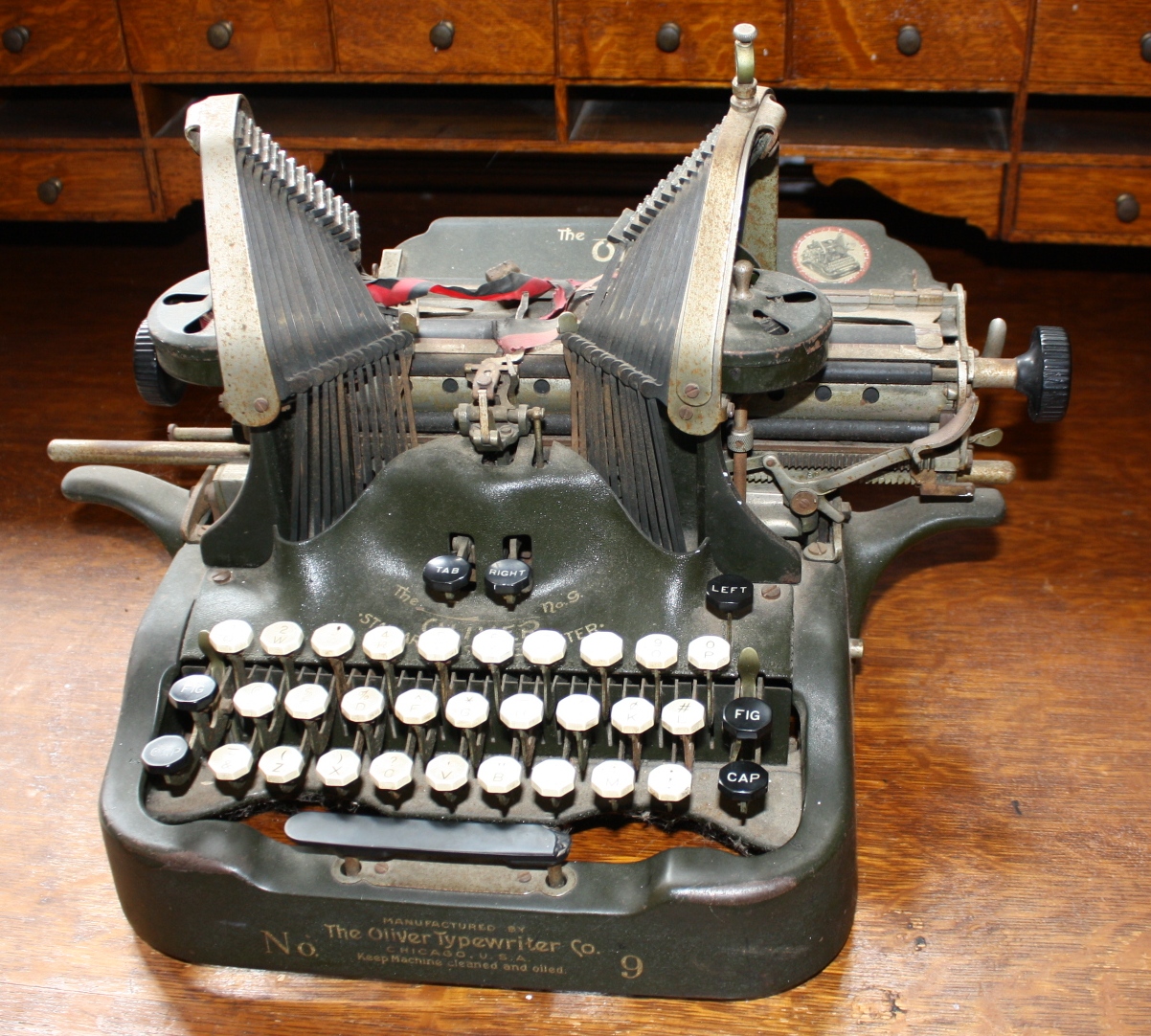
An Adler Tippa S (Made in Holland – Has to be Yellow too of course):
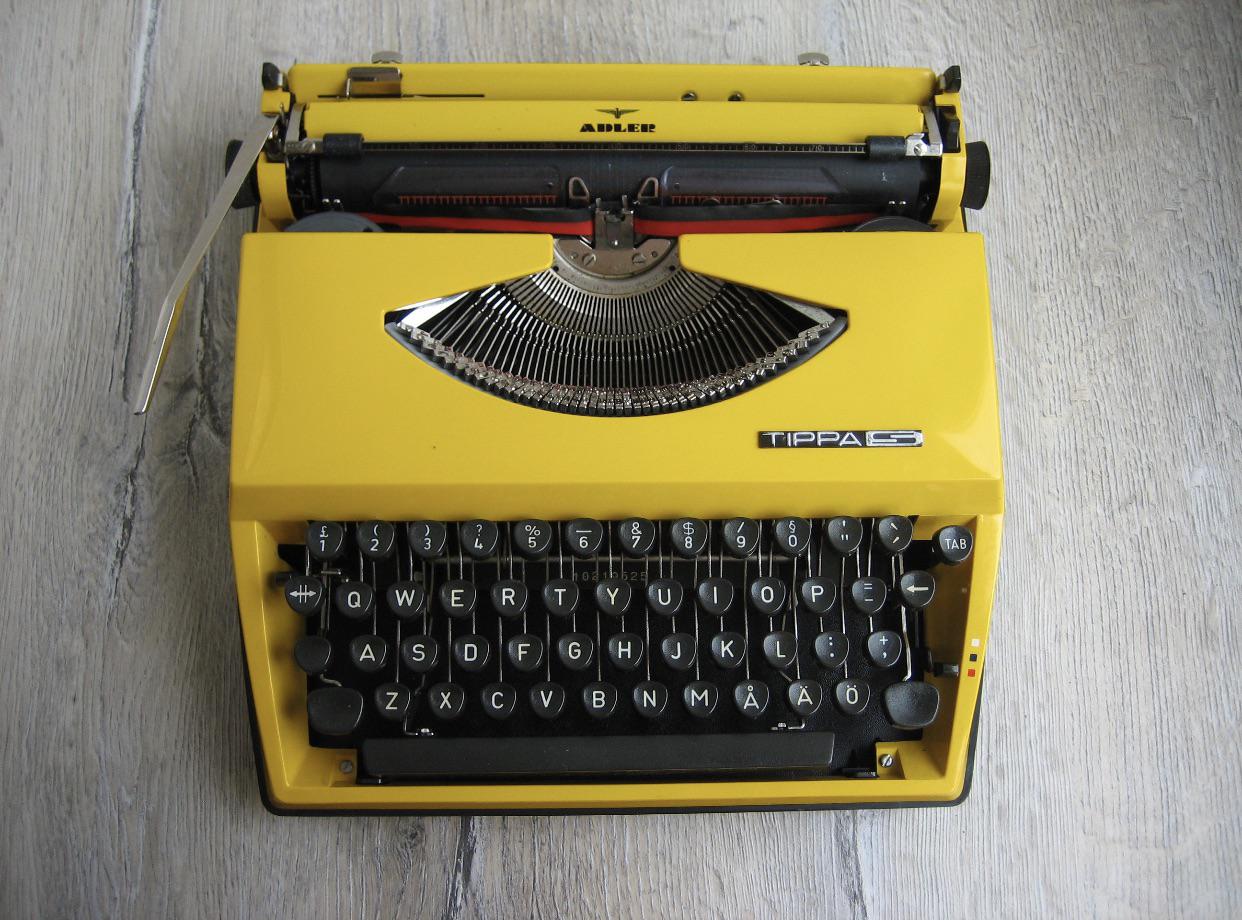
Honestly, that is about it. The Adler Tippa S (also came as a Triumph Tippa S) because it has been said to be a really wonderful, quiet, solid machine to write with, and the Oliver because, how odd is that thing? I mean, just to see it is amazing, but to use one? Not every day because no numbers, but still, it’s crazy.
Oh, maybe a Hermes 3000, but it got pointed out by Tom Hanks as one of his favorites, so the price is now “rich folk only” territory.
Have a great day, I’m off to bed because late, and sleepy.
~me
